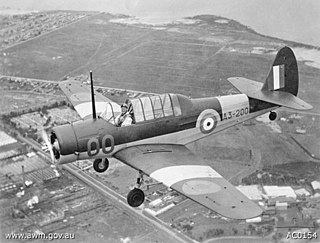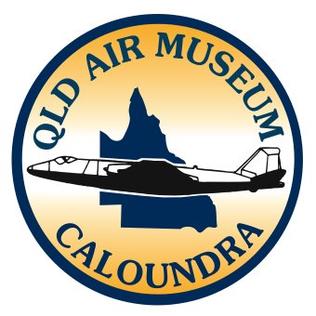
Essendon Fields Airport, colloquially known by its former name Essendon Airport, is a 305 ha public airport serving scheduled commercial, corporate-jet, charter and general aviation flights. It is located next to the intersection of the Tullamarine and Calder Freeways, in the north western suburb of Essendon Fields of Melbourne, Victoria, Australia. The airport is the closest to Melbourne's City Centre, approximately an 11 km (6.8 mi) drive north-west from it and 8 km (5.0 mi) south-east from Melbourne–Tullamarine Airport. In 1970, Tullamarine Airport replaced Essendon as Melbourne's main airport.

Bankstown Airport is an airport and business park located in the City of Canterbury-Bankstown, approximately 26 km (16 mi) from the Sydney Central Business District (CBD), Australia, and 17 km (11 mi) west of Sydney Airport. It is situated on 313 ha of land and has three parallel runways, several apron areas, a small passenger terminal and a business park, home to more than 160 businesses. The airport is home to numerous fixed-wing and helicopter flying schools and also caters to charter and private business flights, freight, aeromedical services, recreational flights, aircraft maintenance businesses, private aircraft and emergency services. Bankstown Airport operates 24 hours a day, with limitations placed on night circuit training.

The CAC Wackett Trainer, or simply Wackett, was the first aircraft type designed in-house by the Commonwealth Aircraft Corporation of Australia. The name was derived from its designer Lawrence Wackett.

The de Havilland DH.60 Moth is a 1920s British two-seat touring and training aircraft that was developed into a series of aircraft by the de Havilland Aircraft Company.

Camden Airport is an aerodrome located on the outskirts of Sydney, 1 nautical mile northwest of Camden, New South Wales, Australia. The airport is located approximately 60 km (37 mi) from Sydney's central business district. Camden is used as a general aviation overflow airport for the busier Bankstown Airport, and provides facilities for gliding and ballooning. The aerodrome has one grass runway and one paved runway and two glider airstrips. It is in the south-west corner of the designated Sydney flight training area.

Desoutter is a British monoplane liaison aircraft manufactured by Desoutter Aircraft Company at Croydon Aerodrome, Surrey.

The de Havilland DH.94 Moth Minor was a 1930s British two-seat tourer/trainer aircraft built by de Havilland at Hatfield Aerodrome, England. With the start of the second world war production of the Moth Minor was moved to de Havilland Australia at Bankstown Aerodrome, Australia.
Mudgee Airport is a regional airport located 3 nautical miles north northeast of Mudgee, New South Wales, Australia. The airport is frequently used for technical training. FlyPelican operates a flight to Sydney, making it the only commercial airline serving Mudgee.
Moree Airport is an airport in Moree, New South Wales, Australia. The airport is 5 km (3.1 mi) from the city centre. The airport has some scheduled services but mainly provides general aviation facilities, maintenance and support for agricultural aviation in the local area. The Moree Aero Club has been based at the airport since 1952, and today provides aircraft hire and flight training. The club was instrumental in providing many early improvements to the aerodrome facilities, including hangars and a terminal building. In the 2021-22 Financial Year, Moree Airport handled 18,073 passengers, down from approximately 35,000 per year before travel restrictions were introduced as a result of the response to the COVID-19 pandemic.

Shellharbour Airport, formerly Illawarra Regional Airport, also referred as Albion Park Aerodrome or Wollongong Airport, is an airport located in Albion Park Rail, New South Wales, Australia.
The Royal Victorian Aero Club is an Australian aero club based at Moorabbin Airport in Melbourne.

Toowoomba City Aerodrome is an airport located 2.2 nautical miles northwest from the CBD of Toowoomba, Queensland, Australia. Toowoomba City Aerodrome is both licensed and certified. The aerodrome is owned and operated by Toowoomba Regional Council. Being certified means the airfield is able to have airlines and larger charter aircraft operate from the aerodrome. Being licensed means that the aerodrome is regulated by federal transport security regulations. Toowoomba City Aerodrome does not have a control tower; however the airfield is regulated and operated under Civil Aviation Safety Authority (CASA) regulations of aviation operations at non-tower controlled aerodromes.

Temora Airport is a small airport located 2 nautical miles northwest of Temora, New South Wales, Australia. Currently no regularly scheduled passenger fights serve the airport. The current owner, the Temora Shire Council, do not charge landing fees for aircraft to use the facility, encouraging a wide variety of general aviation uses, including skydiving, gliding, flight training, kit aircraft assembly and aircraft maintenance. It is also the home of the Temora Aviation Museum, and hosts regularly flying displays and events.
Scone Memorial Airport, is a public airport in the Upper Hunter Valley, 4 km (2.5 mi) north-west of Scone, New South Wales, Australia. It was built to provide a public aerodrome replacing Nandowra aerodrome on located on Nandowra, approximately nine kilometres south of Scone.
Maitland Airport, also known as Russell Field is a general aviation airport located in the suburb of Rutherford, approximately 5 km (3.1 mi) from Maitland in the Australian state of New South Wales. There are currently no airline services, with the airfield catering mostly to general aviation and recreational category aircraft. The airport has been owned and operated by the Royal Newcastle Aero Club since 1963 and shares a large training area with the nearby Cessnock Airport. Throughout its history, the airport has played host to many airshows, races and flying competitions. The field is named for the fifth President of the Royal Newcastle Aero Club, Robert Russell, who suffered a fatal heart attack while on the premises in 1966.
The Oaks Airfield is an unlicensed private airfield located in The Oaks, New South Wales, in the Wollondilly Shire, west of Sydney, Australia. Originally built by the Royal Australian Air Force (RAAF) during World War II, today the airfield caters mostly to recreational aircraft and flight training and is home to Dave's Flying School and the Sydney Recreational Flying Club. The airfield is a heritage listed site and is the only airport constructed during WWII to still be operational. Other airfields from the time in Sydney have either being converted or demolished.

Caboolture Airfield is an aerodrome catering to general aviation and ultralight aircraft located in Caboolture, Queensland, Australia, approximately 55 km (34 mi) north of the state capital Brisbane, adjacent to the Bruce Highway. The airfield is maintained and operated by the Caboolture Aero Club Incorporated and shares a large training area with nearby Caloundra Airport and Redcliffe Airport. The airfield is a popular site for the restoration of historic aircraft and a number of associated businesses are located onsite.

The Queensland Air Museum is a not-for-profit all-volunteer aviation museum located near the Caloundra Airport in Queensland, Australia. Its mission is to collect and preserve all aspects of aviation heritage with an emphasis on Australia and Queensland. The museum has the largest and most diverse collection of historic aircraft in Australia and it also has a large collection of aircraft engines, equipment, artefacts, photographs, uniforms and books.
Harry Frank "Jim" Broadbent was a British pilot largely raised in Australia, who took part in air racing and record-breaking flights in the 1930s.
Early Australian female aviators were generally active since 1927 when it became possible for an Australian woman to hold a pilot's licence and fly within Australia. Women had participated in gliding, or taken a licence overseas, but they had not been permitted to fly a plane under licence within Australia. The first Aero Club in Australia was established in 1915.














